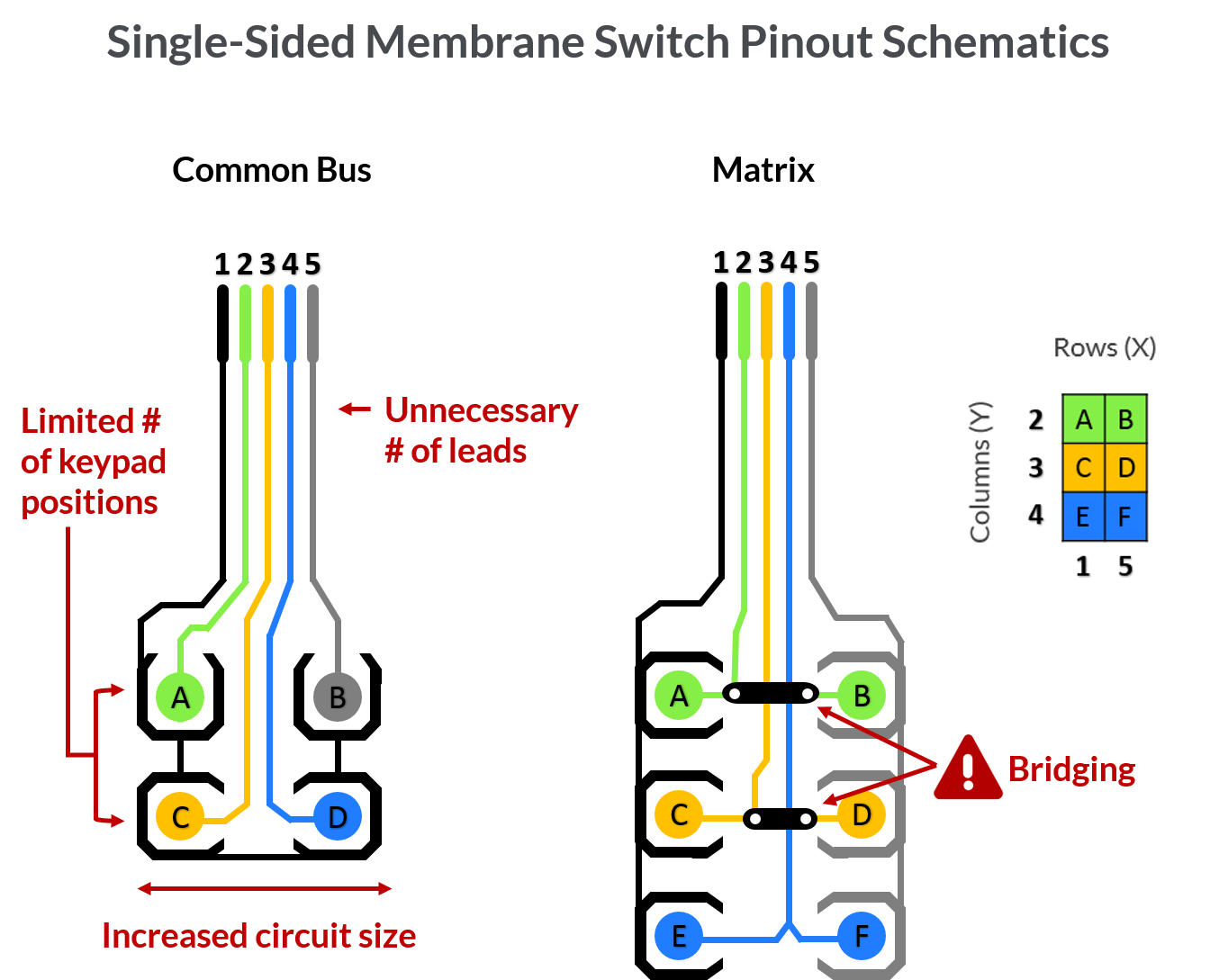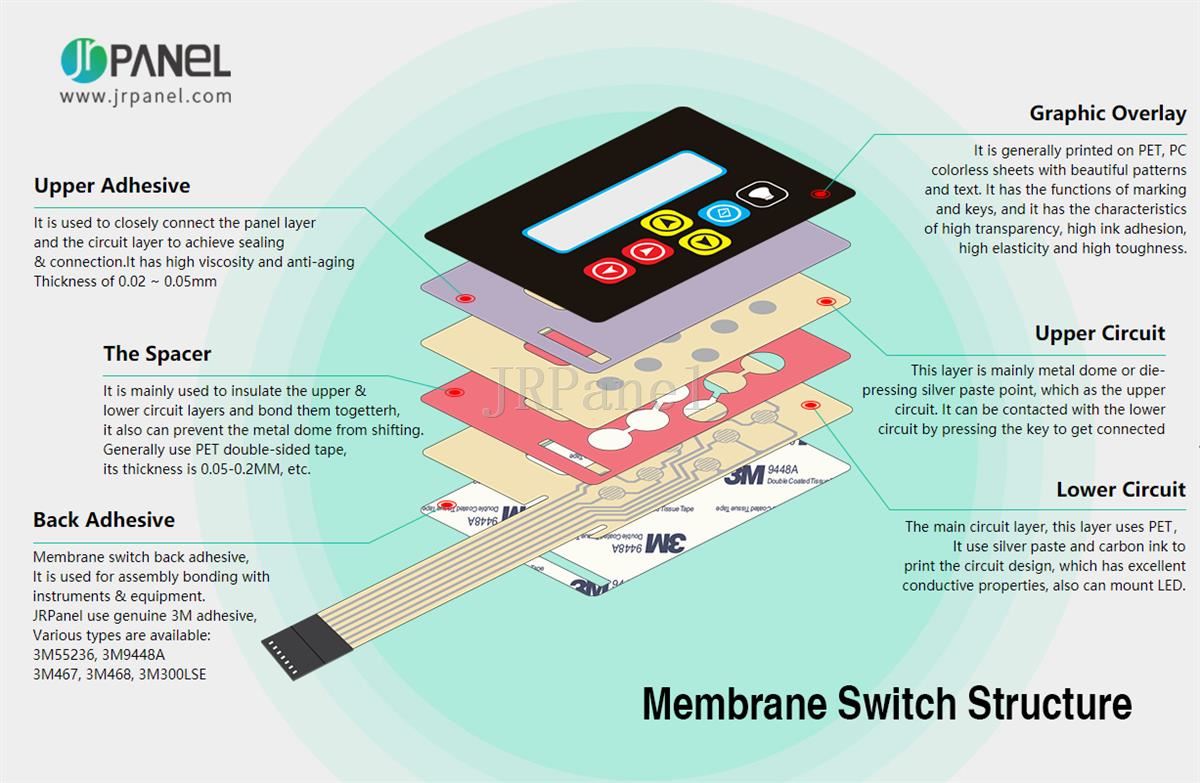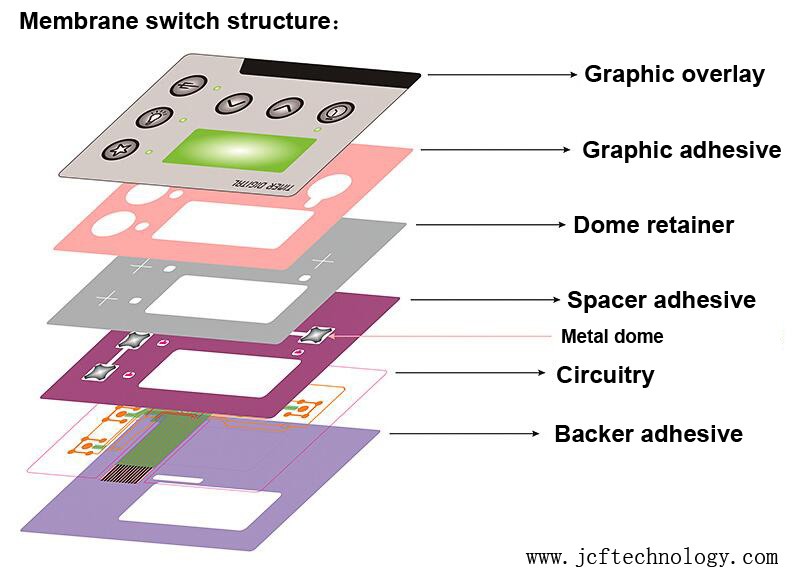Understanding Membrane Layer Changes: The Key to Resilient and Dependable Controls
Membrane layer changes stand for an important facet of modern-day interface style, blending capability with resilience in numerous applications. These versatile parts not only promote customer communication but are additionally crafted to endure the rigors of requiring settings, from clinical devices to commercial machinery. Understanding their building, procedure, and the myriad advantages they supply is vital for engineers and designers alike. As we explore the complexities of membrane layer buttons, it comes to be clear that their function in boosting control systems is both extensive and complex, questioning concerning how best to leverage their capacities in future advancements.
What Are Membrane Buttons?
Membrane buttons are a sophisticated option in the realm of user interface modern technology, integrating functionality and style seamlessly. These tools offer as a user interface in between customers and digital systems, integrating numerous components right into a compact style. Typically constructed from versatile, slim layers of products, membrane layer buttons are developed to react to touch, enabling individuals to connect with machinery and electronic tools properly.
The key components of a membrane button consist of a printed circuit layer, visuals overlay, and a spacer layer that avoids unintentional activation. The graphic overlay can be customized to show brand identification or user choices, improving appearances while guaranteeing functionality. Membrane switches are frequently used in numerous applications, consisting of medical devices, consumer electronics, and commercial equipment, owing to their durability and resistance to environmental aspects such as moisture and dust.
One of the crucial advantages of membrane buttons is their capacity to hold up against wear and tear, making them excellent for high-traffic environments. In addition, they are lightweight and require very little area, permitting for ingenious styles in item advancement. Generally, membrane switches over represent a reliable and practical selection for modern digital user interfaces, weding technology with user-centric style concepts.

Just How Membrane Switches Over Work
The procedure of membrane layer changes joints on an easy yet effective mechanism that converts individual input into electronic signals. These switches contain several layers, typically including a graphic overlay, a spacer layer, and a circuit layer. When an individual presses the button, the top layer deforms, permitting a conductive component in the circuit layer to reach a corresponding conductive pad on the bottom of the visuals overlay. This get in touch with shuts the circuit and sends a digital signal to the tool, showing that the switch has actually been turned on.
The layout of membrane buttons can differ, but they usually incorporate domes or responsive aspects to offer responses to the user, improving the general experience. The products made use of in membrane layer switches, such as polyester or polycarbonate, add to their resilience and resistance to ecological elements, consisting Recommended Reading of moisture and dirt. The printed circuits are usually enveloped, which secures them from wear and tear over time.

Benefits of Membrane Switches
Among the main advantages of membrane layer switches is their flexibility in style, enabling them to be personalized to satisfy specific user needs and visual needs. This adaptability reaches various industries, where different shapes, dimensions, and shades can be employed to boost customer interaction and aesthetic allure.
In addition, membrane layer buttons are recognized for their sturdiness. Created from robust products, they are immune to dust, dampness, and physical wear, which substantially prolongs their life-span compared to standard mechanical switches. This toughness makes them especially suitable for high-traffic environments and applications calling for longevity.

Additionally, membrane layer buttons provide a streamlined profile, resulting in a thinner layout that can be integrated right into various tools without including mass. This feature not only enhances the visual appeal however likewise contributes to an extra ergonomic item style.

Applications of Membrane Switches
User-friendly and versatile, membrane layer switches locate applications throughout a wide variety of markets, including clinical tools, customer electronics, and industrial tools. In the medical field, these switches are indispensable to gadgets such as analysis tools, patient tracking systems, and infusion pumps, where dependability and ease of cleansing are Read Full Report essential. Their capacity to preserve and endure harsh environments performance makes them suitable for such applications.
In consumer electronic devices, membrane buttons are made use of in products like microwaves, washing machines, and remotes - membrane switch. Their streamlined design enables for user-friendly interface, enhancing the overall customer experience while providing longevity and resistance to use and tear
Commercial devices additionally profits from membrane layer switches, particularly in control panels for machinery and automation systems. These buttons provide defense versus dust and moisture, making certain constant performance in difficult atmospheres. Their customizable attributes permit manufacturers to tailor them to details operational needs, enhancing efficiency and performance.
Choosing the Right Membrane Switch Over
When selecting a membrane layer switch, it is vital to consider different variables that affect efficiency and suitability for details applications. The key factors to consider include environmental conditions, tactile feedback, resilience, and style specs.
First, assess the operating environment; buttons revealed to wetness, chemicals, or extreme temperature levels call for particular materials to make sure longevity and functionality. Next off, examine the requirement for responsive comments. Relying on user communication, some applications might benefit from a tactile action to verify activation, while others may like a non-tactile design for aesthetic factors.
Toughness is an additional important variable; membrane switches need to be made to endure regular use, influences, and abrasion. Guarantee the chosen switch can endure the expected lifecycle, particularly in high-usage scenarios.
Final Thought
In verdict, membrane switches over serve as vital like this components in the style of reliable and sturdy control systems across different sectors. The flexibility of membrane layer switches over permits for customized remedies that fulfill details operational requirements, strengthening their value in contemporary technology.
Membrane layer switches over represent a vital facet of modern-day user interface style, mixing performance with durability in different applications.Membrane layer buttons are an innovative option in the world of individual interface technology, integrating capability and style flawlessly. Commonly constructed from flexible, slim layers of materials, membrane buttons are created to respond to touch, making it possible for customers to connect with equipment and electronic gadgets effectively.
The design of membrane layer buttons can vary, yet they usually integrate domes or tactile elements to supply comments to the individual, boosting the general experience.In conclusion, membrane switches serve as crucial components in the style of durable and trusted control systems across numerous markets.